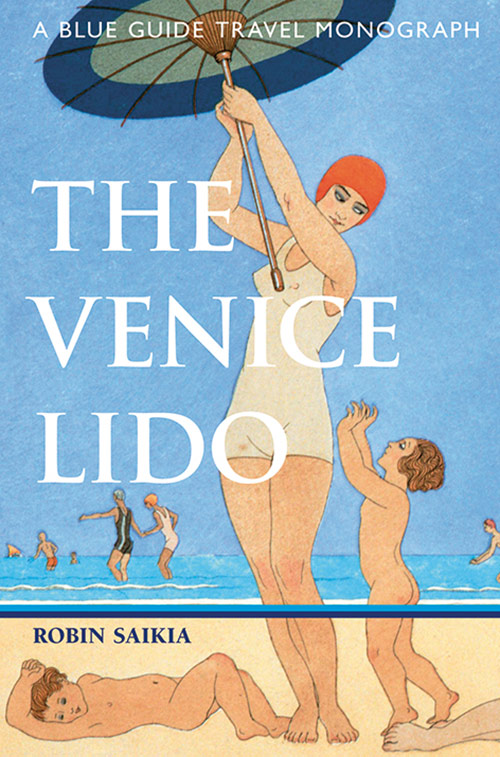
Short and literary guide to Venice’s Lido, in the Blue Guides’ new Travel Monographs series.
View details, look inside and buy securely from blueguides.com here »

Short and literary guide to Venice’s Lido, in the Blue Guides’ new Travel Monographs series.
View details, look inside and buy securely from blueguides.com here »
Comments are closed.
| Cookie | Duration | Description |
|---|---|---|
| cookielawinfo-checbox-analytics | 11 months | This cookie is set by GDPR Cookie Consent plugin. The cookie is used to store the user consent for the cookies in the category "Analytics". |
| cookielawinfo-checbox-functional | 11 months | The cookie is set by GDPR cookie consent to record the user consent for the cookies in the category "Functional". |
| cookielawinfo-checbox-others | 11 months | This cookie is set by GDPR Cookie Consent plugin. The cookie is used to store the user consent for the cookies in the category "Other. |
| cookielawinfo-checkbox-necessary | 11 months | This cookie is set by GDPR Cookie Consent plugin. The cookies is used to store the user consent for the cookies in the category "Necessary". |
| cookielawinfo-checkbox-performance | 11 months | This cookie is set by GDPR Cookie Consent plugin. The cookie is used to store the user consent for the cookies in the category "Performance". |
| viewed_cookie_policy | 11 months | The cookie is set by the GDPR Cookie Consent plugin and is used to store whether or not user has consented to the use of cookies. It does not store any personal data. |
The Good Book Guide in its May 2012 “Focus on Blue Guides”:
Saikia’s lyrical and wryly affectionate tribute to an integral part of Venetian history is a homage to ‘the warm and glamorous’ shores of the Lido.
http://www.thegoodbookguide.com
The Venice Lido reviewed by Vera Rule in the Guardian:
A pocket-sized monograph, with mini-map, on the history of the great prototype beach resort, and so well brought off I expected sand to sift from its pages while I was reading. The evocation of the Lido in winter is especially sharp, that sense of it being (even considering the development thereon) still the wild walk of Venice with the Adriatic storm wrack fetching up along its shoreline. Excellent, if often dodgy, company is kept throughout: Byron of course (and Byron quiet at that, soberly asking that his grave should, like one in the Certosa cemetery, merely implore peace); Diaghilev being rowed to his burial, with the bill settled by Chanel; and many gallant and gay gondolieri-fanciers. Moreover Saikia can separate the didactic John Ruskin from the offduty Ruskin, who temporarily lost his little dog Wisie to the Lido waves, which returned the canine better and wiser. Smashing sections on the local intersection of early airplanes and futurism, and the invention of the film festival, almost casually, in 1932. All this and Cole Porter, too.
http://www.guardian.co.uk/books/2011/jul/08/venice-lido-robin-saikia-review
REVIEW of Robin Saikia’s The Venice Lido:
A slim volume that is nonetheless fat with facts about what is an often-forgotten part of Venice and remains a fascinating anomaly. I admit to seeing it as a place apart myself, as very different from ‘my’ Venice of art, gelato, decay, and dark romance, the Lido being just so ’seaside’, so bright and open. It’s acquired a reputation for fun and glamour, what with the film festival and the beach-front hotels and all that’s not, for me, very Venetian. The author obviously loves the place, though, and reading his book often made me think I’d done the Lido wrong. There’s lots of history, from Malamocco being the first centre of Venice, through the famous old wedding ceremony to visits from Mussolini and Hitler. The concentration, though, given the reputation for glamour and indulgence, is unsurprisingly on the late 19th Century and, especially, the early decades of the 20th. Diaghilev, Cole Porter, Churchill, Thomas Mann and the Mosleys all feature amongst the period wastrels during this prime. I think that the aspect of the Lido that I can get behind, and which this book brings out, is its status as a break from the rigors of Venice itself. There’s more nature and sky to be found here and a visit can be a rest from the crowds and the crumble. But however you approach it this book will broaden your horizons.
http://www.fictionalcities.co.uk/venice2.htm#lido
The Venice Lido reviewed by Lewis Jones in the London Spectator:
Books about Venice are almost as numerous as gondolas on the Grand Canal, but Robin Saikia is the first to write one about the Lido. The subject might be thought too insubstantial for a book of its own, and so it proves: excluding its index and appendices, The Venice Lido (Somerset Books, £6.95) runs to a modest 132 pages of generously sized print. But what this monograph lacks in volume it makes up for in warmth, charm and eccentric scholarship. The ten-mile sandbank that is the Lido (from litus, ‘shore’) was first settled by refugees from Attila the Hun, and what is now the fishing village of Malamocco was the original seat of Venetian government, before its citizens crossed the lagoon to the Rialto (rivo alto, ‘high ground’). For a millennium or so it was a wilderness, but after the fall of the Republic in 1797 it became a place of recreation, a frivolous escape from the oppressive grandeur of Venice proper. Byron, as so often, set the fashion, swimming a race from the beach to the far end of the Grand Canal, and ‘beating an Italian all to bubbles’. And though the resort that grew up there was deplored by Henry James and D.H. Lawrence (‘altogether far too much enjoyment’), it has been loved by many others. Its grand hotels, such as the one where von Aschenbach mooned over Tadzio, have recently been splendidly restored, and it is at their guests that this book is most accurately aimed.
http://www.spectator.co.uk/books/bookends/7044658/bookends-venice-improper/